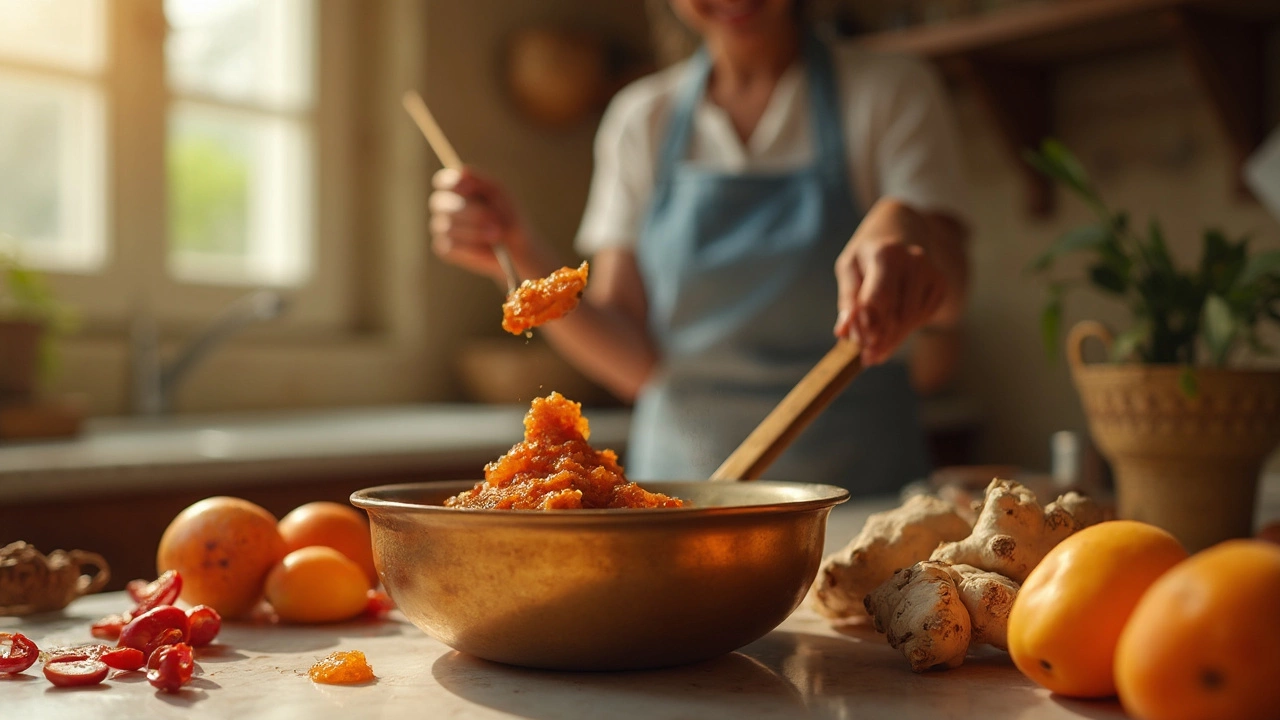Cooking Chutney: Simple Tips for Perfect Flavor and Texture
Chutney can turn a plain snack into a burst of taste, but getting it right feels tricky. The good news? You only need a few easy rules. Grab your favorite ingredients – coriander, mint, tamarind, or coconut – and follow these steps to nail flavor, thickness, and shelf‑life every time.
Lid On or Off? Getting the Right Consistency
If you’ve ever wondered whether to keep the lid on while simmering, here’s the short answer: start with the lid off. This lets excess moisture steam away, so the chutney thickens without becoming watery. Stir often to avoid sticking, and once it looks glossy and coats the back of a spoon, pop the lid on for the last few minutes. That trap of steam softens any remaining raw edges while keeping the texture smooth.
For raw or blended chutneys, skip the heat altogether. Pulse everything in a blender with a splash of water or yogurt, then taste. Add a pinch of salt or a squeeze of lemon to balance the flavors. Remember, a thin chutney can always be reduced; a thick one is harder to fix.
Serving and Storing Your Chutney
When it comes to pairing, think about contrast. A spicy tomato chutney brightens fried samosas, while a sweet coconut version pairs beautifully with grilled fish. Toss a spoonful over plain rice or drizzle it over roasted vegetables for an instant flavor lift.
Store leftovers in a clean glass jar, seal tightly, and refrigerate. Most chutneys stay fresh for up to a week. If you notice any foam or off‑smell, it’s time to discard. For longer storage, freeze portions in ice‑cube trays – just thaw what you need.
Quick tip: add a tiny bit of oil to the jar before sealing. The oil creates a barrier that helps preserve color and prevents mold. It works especially well with oil‑based chutneys like peanut or sesame.
Experiment with textures. If you like a chunkier dip, mash the ingredients by hand after cooking. For a silky spread, pass the cooked mixture through a fine sieve. Both styles have their fans, so try both and see which fits your dishes best.
Don’t forget spice balance. A pinch of roasted cumin or a dash of asafoetida can turn a flat chutney into a flavor powerhouse. Taste as you go – a little adjustment now saves a big correction later.
With these basics, cooking chutney becomes as easy as boiling pasta. Grab your pan, follow the lid rule, pair it right, and store it smart. Your meals will thank you, and you’ll have a versatile condiment ready whenever cravings hit.
How Thick Should Chutney Be When Cooking?
Wondering about the perfect thickness for chutney? This article uncovers what to look for as your chutney cooks up, why consistency matters, and how to nail that just-right texture. Packed with clever tips and practical advice, it’ll help you solve common chutney blunders—whether you like it spreadable or pourable. Learn some little-known truths about sugar, pectin, and cooling, so you never end up with a runny or rock-hard batch again. Guaranteed to make your next chutney deliciously on point.
